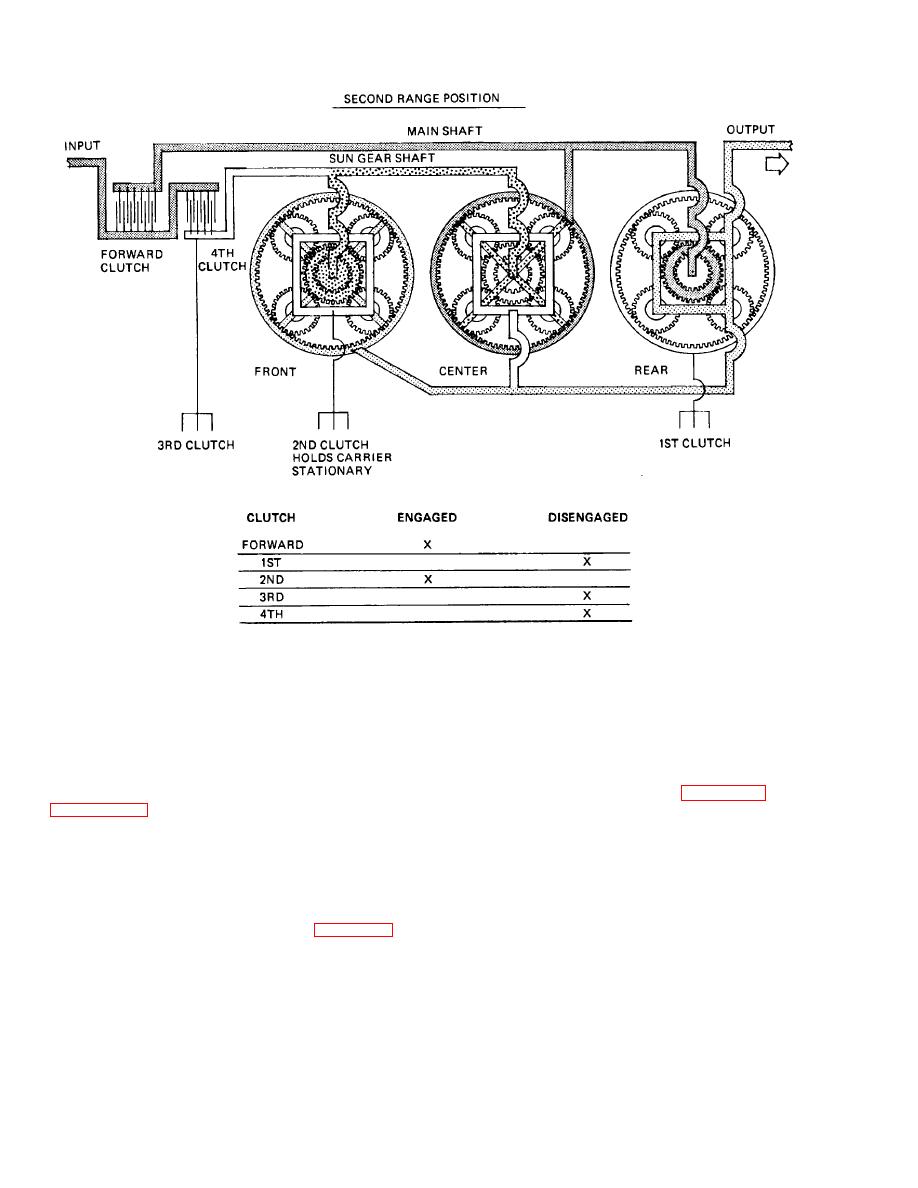
| Tweet |

Custom Search
|
|

|
||
 TM 9-8000
Figure 25-6. Power Flow through X1100 Transmission in Second Range
The pressurized control piston rotates the hang- ing ring
pump circuit as required to replenish oil lost in leakage
to a position that causes the hydrostatic pump pistons to
during overload, or in control functions. The other valve
reciprocate. The length of their stroke corresponds to
remains closed. The direction of rotation determines
the degree of steer ap- plied, and the hydraulic output of
when each valve is opened or closed. Oil is supplied
the hydrostatic pump is directly proportional to the stroke.
through the open valve to the input side of the hydrostatic
Oil flow from the moving pistons now is directed to the
pump.
proper port of the motor. This produces the movement
required to drive the sun gears of the planetary gearsets.
b. Control Pumps (Fig. 25-12). The control
pumps further pressurize the oil before it is directed to
right steering.
the hydrostatic pump control system. The output of the
control pumps is directed to three points: the first point is
the control pressure regulator valve; the second is the
25-7. Components. In addition to the components
secondary control pressure regulator; and the third is the
mentioned above, other elements are used in the
rotary servo unit.
steering system. Each is discussed below.
c. Servo Sleeve. The servo sleeve is a rotating
a. Supercharge Check Valves (Fig. 25-12). Two
sleeve valve with ports to direct control pressure to the
supercharge check valves are provided in the line
control pistons. The servo sleeve is centered on the
between the main pressure regulator and the hydrostatic
same axis as the hanging ring (mechanism that controls
pump. One check valve is open at all times to provide
the pump piston stroke) and is
additional oil to the hydrostatic
TA233747
25-6
|
||
 |
||